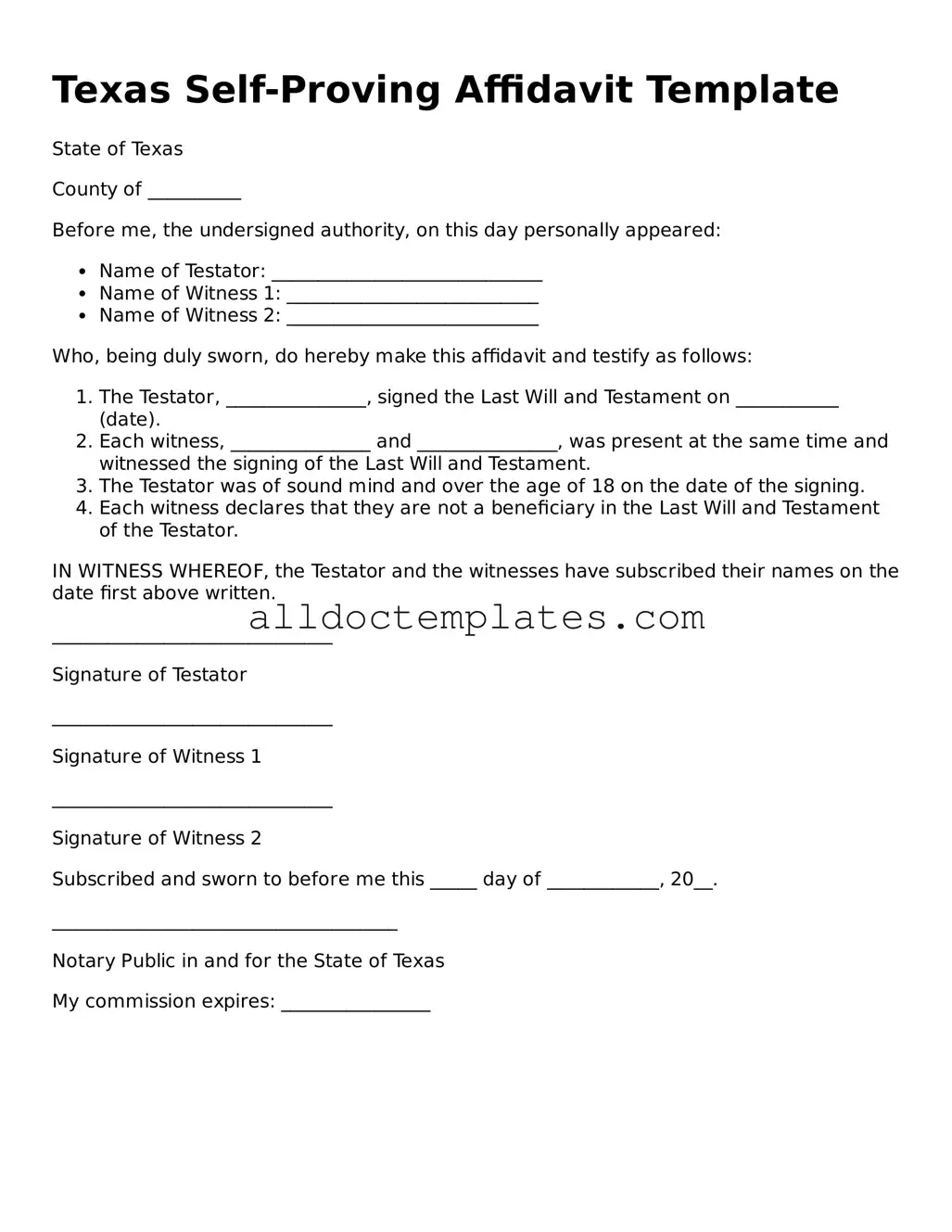Texas Self-Proving Affidavit Template
State of Texas
County of __________
Before me, the undersigned authority, on this day personally appeared:
- Name of Testator: _____________________________
- Name of Witness 1: ___________________________
- Name of Witness 2: ___________________________
Who, being duly sworn, do hereby make this affidavit and testify as follows:
- The Testator, _______________, signed the Last Will and Testament on ___________ (date).
- Each witness, _______________ and _______________, was present at the same time and witnessed the signing of the Last Will and Testament.
- The Testator was of sound mind and over the age of 18 on the date of the signing.
- Each witness declares that they are not a beneficiary in the Last Will and Testament of the Testator.
IN WITNESS WHEREOF, the Testator and the witnesses have subscribed their names on the date first above written.
______________________________
Signature of Testator
______________________________
Signature of Witness 1
______________________________
Signature of Witness 2
Subscribed and sworn to before me this _____ day of ____________, 20__.
_____________________________________
Notary Public in and for the State of Texas
My commission expires: ________________
